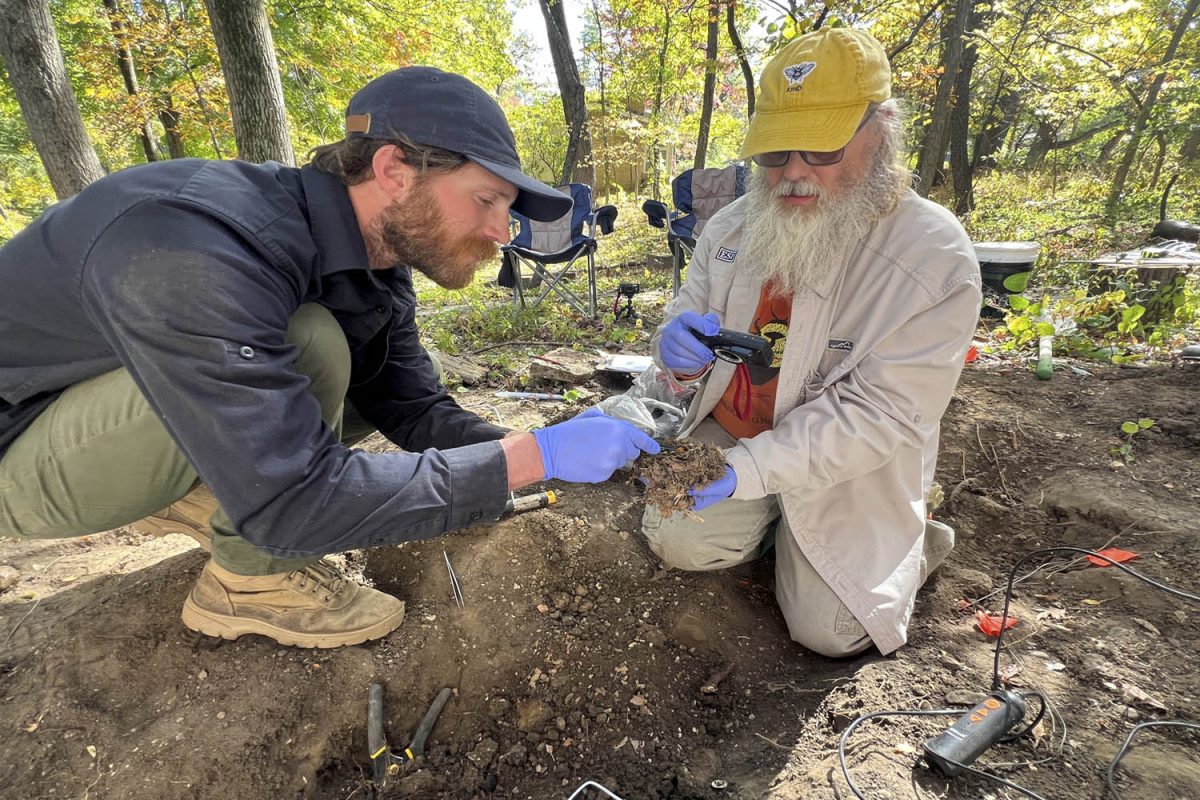A rare bee species’s nest has been spotted in Iowa for the first time since its listing as federally endangered in 2017.
The bombus affinis bee nest, more commonly known as the rusty patched bumblebee, was found by a Johnson County Conservation official in their own backyard in Iowa City. The nest had completed its life cycle, allowing conservation officials to extract DNA from the nest and examine two dead queens.
The rusty patched bumblebee is aptly named for the distinctive reddish brown rusty patch pattern that runs along its abdomen.
West Virginia scientist Kyle Price helped conservation officials extract the hive, tunneling with equipment five feet from the main entrance of an underground rodent hole.
The rusty-patched bumblebee earned its spot as the first federally listed endangered bumblebee in 2017. Since the 1990s, the bee species has declined almost 90 percent. In 2022, Xerces Society conservation biologists concluded the bee was in immediate danger of extinction.
UI biology professor Steve Hendrix pointed towards pesticides, pathogens, and habitat loss as the leading cause of their decline, noting that while they were never abundant in the state to begin with, the decline was still drastic.
Hendrix discussed the rusty patched bumblebee and general bee populations’ reliance on the once-abundant prairie landscape of Iowa.
“Loss of habitat is the big thing,” he said. “We’ve got two-tenths of one percent of the original prairie in Iowa, two-tenths of one percent of the original prairie, I mean, it’s minuscule.”
Hendrix elaborated that most of the loss is attributed to expanding agriculture, most notably from corn and soybean planting.
Beginning in 2002, Hendrix found through research that the successful reproduction of prairie plants depends on the stability of bee populations. He also found that the size of the prairie itself does not necessarily correlate to a larger population of bees.
“Turns out, it’s the number of plants,” he said. “If you’ve got 50 species of plants, a solid amount of bees will find it. We now have to think of these little patches as an oasis for the bees. They’re coming from everywhere, in a landscape with nothing for them.”
Hendrix described how the loss of habitat also means a loss of food for the bees.
“So while I may not starve to death, it’s like when we don’t get enough to eat, you’re more susceptible to viruses,” he said.
One bright spot has emerged throughout Hendrix’s research: bee identification.
“The identification of these things is a real tough jar,” he said. “The resources to do that have gotten better.”
Hendrix brought out an old dictionary-sized paper copy on everything to know about one genus of bees, describing how experts are now able to accurately identify populations with websites like Discover Life.
“It’s like reading a foreign language,” he said while leafing through the book.
Pollinator Partnership’s Gina Bartleson described how such organizations help support pollinators like the rusty-patched bumblebee. In the case of Pollinator Partnership, called Project Wingspan, the organization is in the midst of a multi-year landscape enhancement plan for endangered pollinators throughout the Midwest and Great Lakes regions.
RELATED: Bringing butterflies and bees back to Johnson County
“What we’re trying to do with Project Wingspan, with our organization, is to plant more native plants and enhance and increase the amount of habitat available for rusty patched bumblebees and for other pollinators,” she said.
Bartleson described the many ways in which residents can help protect the bees, most notably by planting native plants that bloom from April to September.
Bartleson also said leaving small mammals in your backyard could help the rusty-patched bumblebee population.
“This nest was discovered in an abandoned rodent burrow, which is just so cool,” she said. “A lot of people don’t like what chipmunks do in their backyard with all the holes they do, but that hole is an ideal nesting spot for the rusty patched bumblebee, potentially.”
Johnson County Conservation Education Specialist Michelle Weigand described the negative role of insecticides.
“Neonicotinoids are toxic insecticides in greater use throughout the rusty-patched Bumblebee range,” she stated. “Chemicals from commercial farming or lawn application are harmful to [them] especially because they do nest underground and may come into contact with contaminated soil.”
Weigand expanded on the vital role the rusty-patch plays in an agriculture-heavy state like Iowa.
“Rusty patched bumblebees and other bumblebees are especially vital because they pollinate through buzz pollination. Many food crops require buzz pollination, including tomatoes, blueberries, cranberries, and eggplant.” she stated.
Weigand referenced a Xerces Society study which stated that native pollinators like the rusty patched bee provide pollination services to agriculture valued at more than $9 billion annually.



